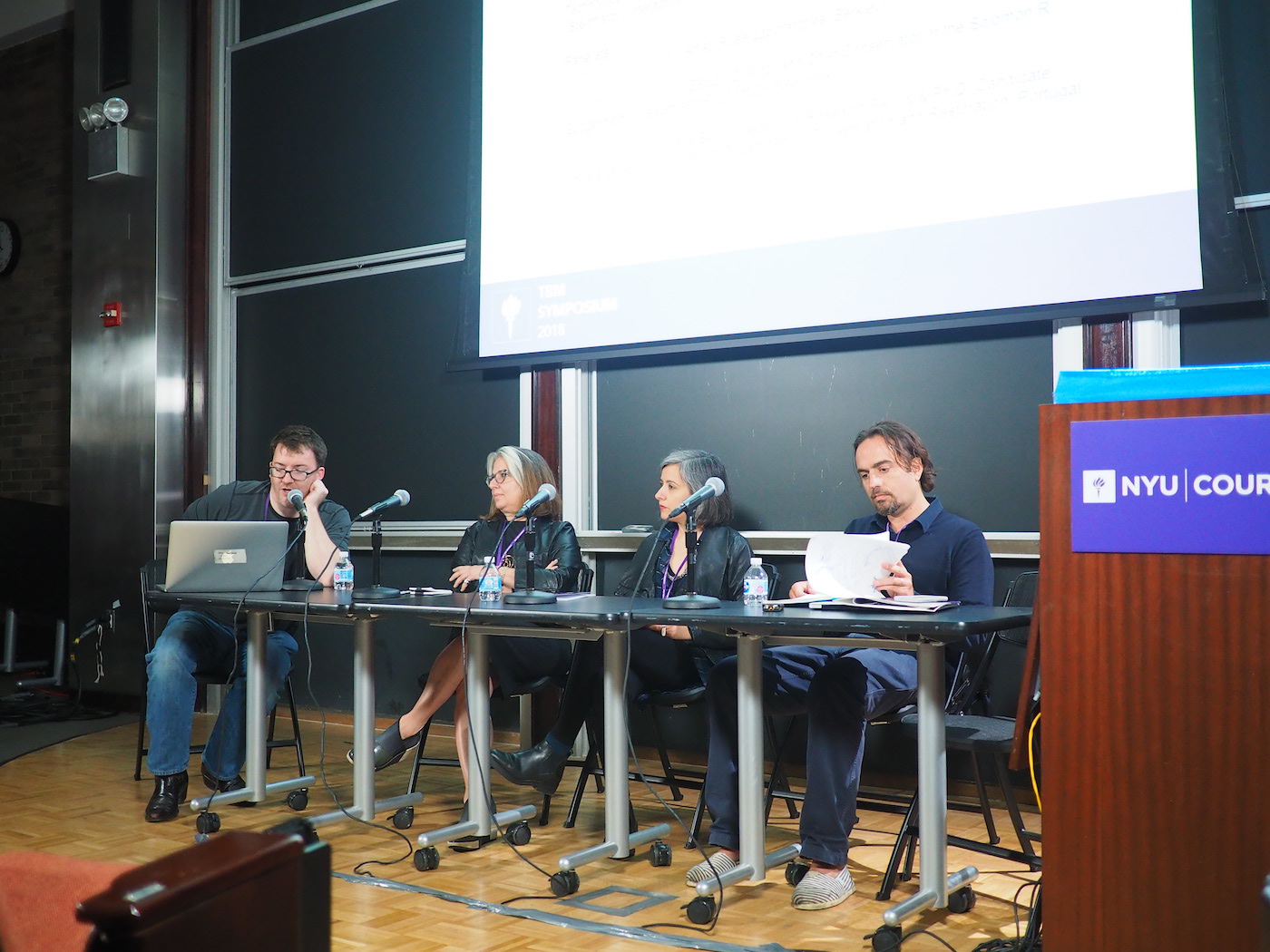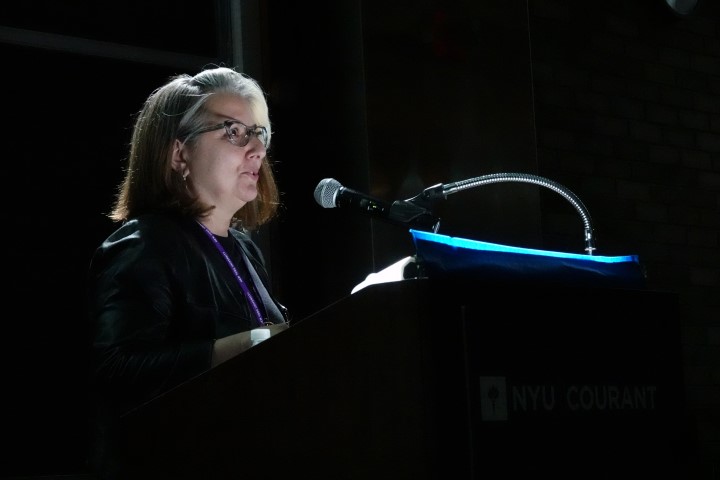This week’s contributing author, Sasha Arden, is a student at The Conservation Center of the Institute of Fine Arts, NYU, specializing in Time-Based Media. They previously worked with media arts at the San Francisco Museum of Modern Art and the Oakland Museum of California, in addition to providing support for media works in private collections and independent exhibitions.
VoCA is pleased to present this blog post in conjunction with the NYU/IFA Conservation Center’s Symposium “It’s About Time! Building a New Discipline: Time-Based Media Art Conservation,” held at NYU in May 2018. The program was organized by Hannelore Roemich and Christine Frohnert and was generously supported by the Andrew W. Mellon Foundation.
After a morning of presentations on TBM conservation practice around the world, a round table was convened to discuss “The Interface Between the Artist and the Conservator.” Moderated by R. Luke DuBois, the panelists included artist Fernando Cwilich Gil, Lena (Carol) Stringari, and Maria Theodoraki. With each bringing an abundant, unique history relevant to the topic at hand, it promised to be an elucidating session.
DuBois began by asking how artists and conservators can be engaged in conversations about the preservation of artworks. Gil suggested that curators can act as an interface to connect the two parties, but that this arrangement could lead to “gatekeeping”. Stringari advocated for fluidity in roles, noting that people are often siloed into discrete packages that stand in the way of good communication. Extending this idea to how artworks are perceived, she also cautioned against separating time-based media from the larger genre of contemporary art, noting that artists generally do not self-identify as “TBM artists” but rather engage in the broader social culture where media and coding are familiar, rich topics. Gil observed the liquidity of creativity, which tends to flow to the most powerful tools of expression in society, defying clear labels in artistic practice.
Theodoraki followed up by countering the common presumption that conservators should keep a distance from artists in order to avoid influencing their practice. She argued for finding ways to relate to and learn from one another. Stringari agreed that when artists and conservators “speak the same language” there is no sense of regulations being set. Gil offered that artists working with technologies experience the Sisyphean task of dealing with obsolescence and intrinsically adopt a conservation mindset. He shared that, for its part, Ruse Gallery intentionally collects works that are at risk, incorporating components and information that are critical to conservation at acquisition.
Gil observed the common task of artists, exhibitors, and conservators to “make it work, cobble it together, and keep it going” as technologies and hardware change and access to the originally used components becomes increasingly difficult. Stringari brought up the fact that every media work may have its own set of requirements for conservation and exhibition, and raised the question of how to address works shown outside the museum, where knowledgeable staff are not always available. Gil encourages artists to start archiving when a work is completed, introducing them to the idea of creating documentation for preservation and future exhibition.
The discussion shifted to the complex considerations at play as technologies change and “improve”. The panelists talked about the value of master files to provide context for how an artwork was perceived in its original presentation, or for production files to provide insight into how artists produced great work using rudimentary technologies. While DuBois and Gil brought up the artist’s urge to remaster to take advantage of better production and presentation methods, Stringari defended the decision to show a “historical version” of a work, also observing that “old tech” is now popular and retains cultural value over time.
The panel then responded to DuBois’ comment that among artists, there is a “folkloric” aspect to what one should do when creating master files and making decisions about how to present artworks in the future. Stringari and Gil discussed the tension between artistic control and institutional control when artists want to stay involved in the upkeep of their works over time, and they touched on the question of legal aspects. They highlighted the benefit of artists and institutions being allies, especially when agreeing upon what the deliverables should be when a time-based artwork is acquired, now that source code and even production files are regularly requested. Stringari emphasized that with every work being idiosyncratic, relationships are central to capture information and make decisions that are in everyone’s best interest.
To close the discussion, DuBois asked what can be offered to artists in practical terms. Theodoraki appealed for schools to include information on best practices for documentation of time-based works because artists want to learn but don’t have resources easily available. She spoke to the importance of communication between artists, curators, and conservators to share key information about artworks. Stringari offered that many institutions now have thorough acquisition forms after years of development and use. Finally, the panel agreed that artists, conservators, and related professionals with experience in the intricacies of time-based media conservation can spread the word within our communities and help others appreciate the scope of what is involved in keeping artworks accessible for the future.
The full program and video of this session can be found at https://www.nyu.edu/gsas/dept/fineart/events/tbmsymposium2018.htm


